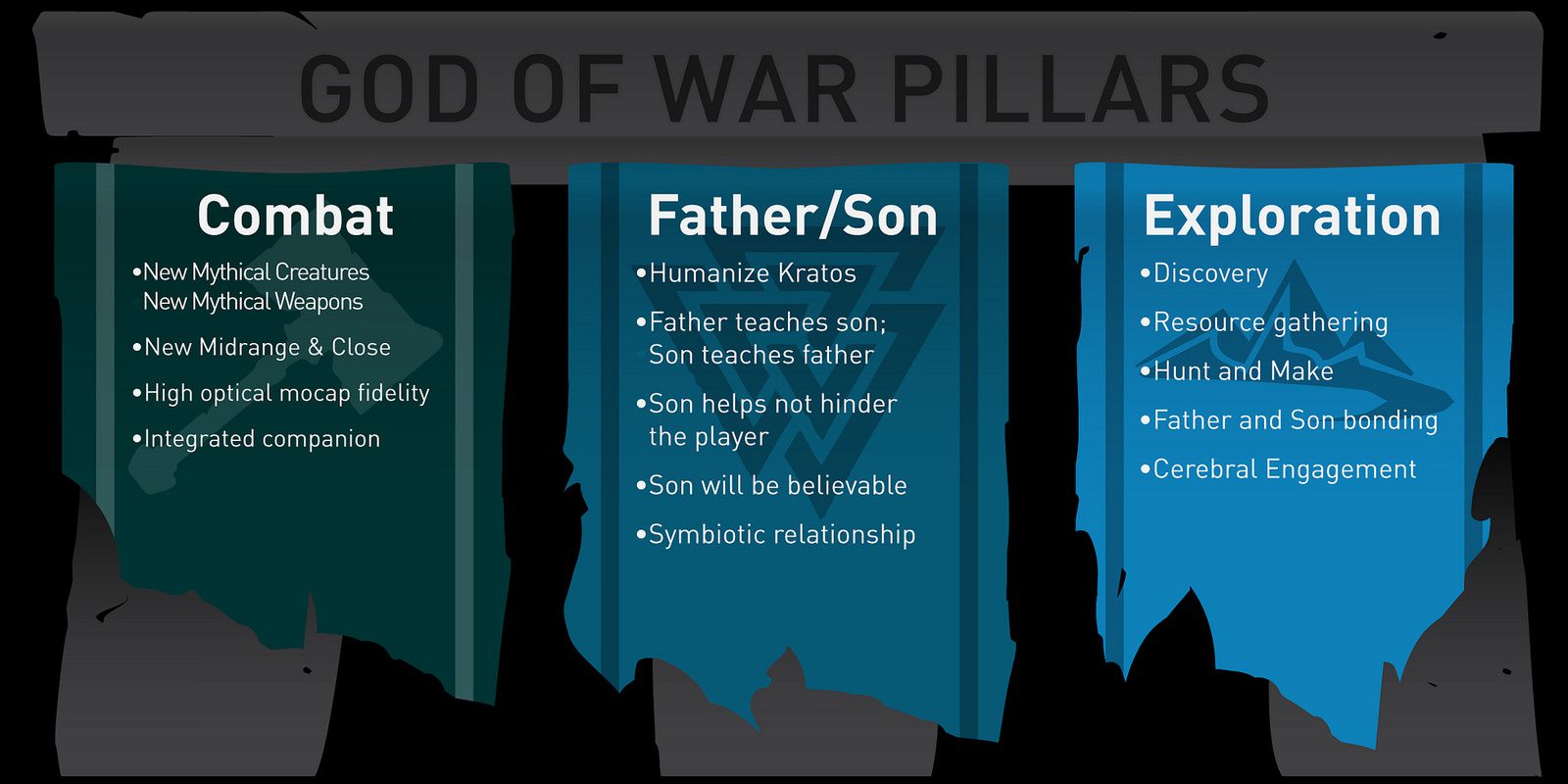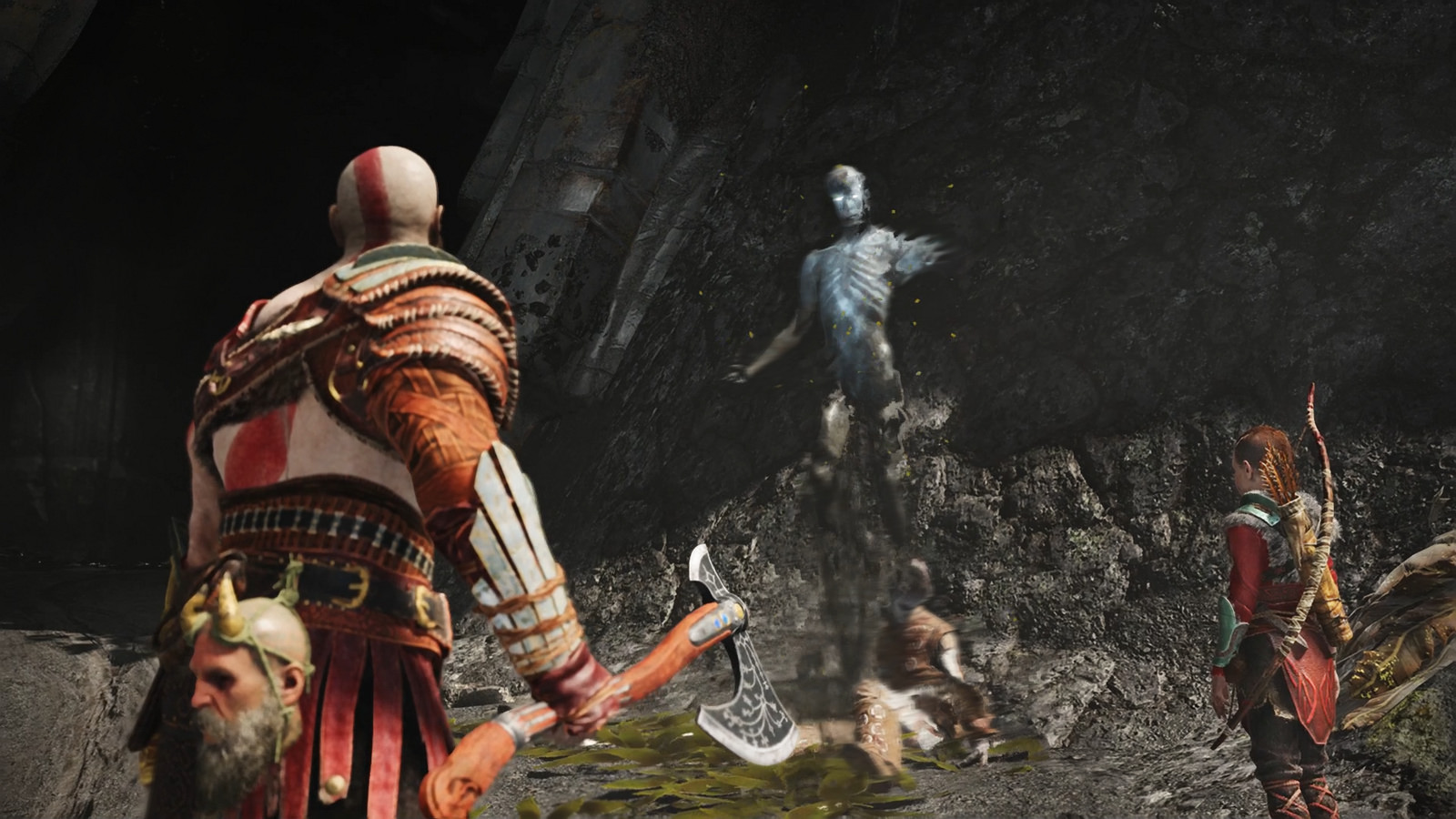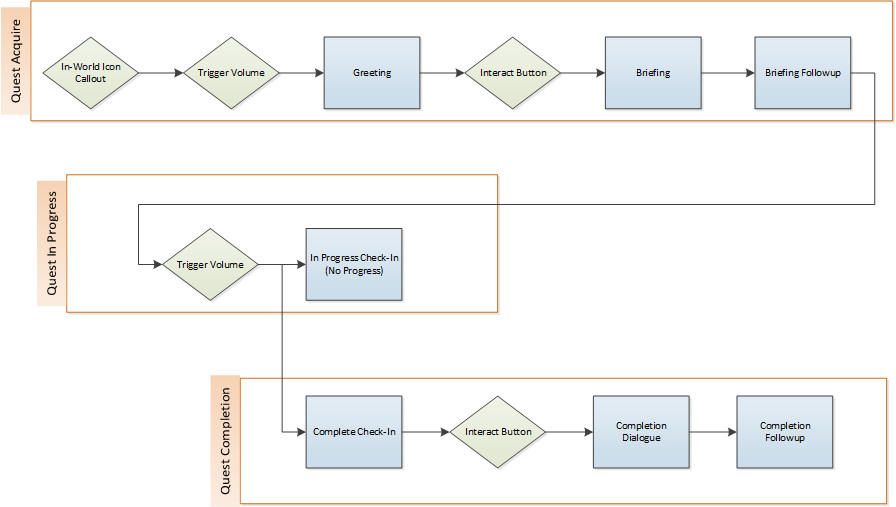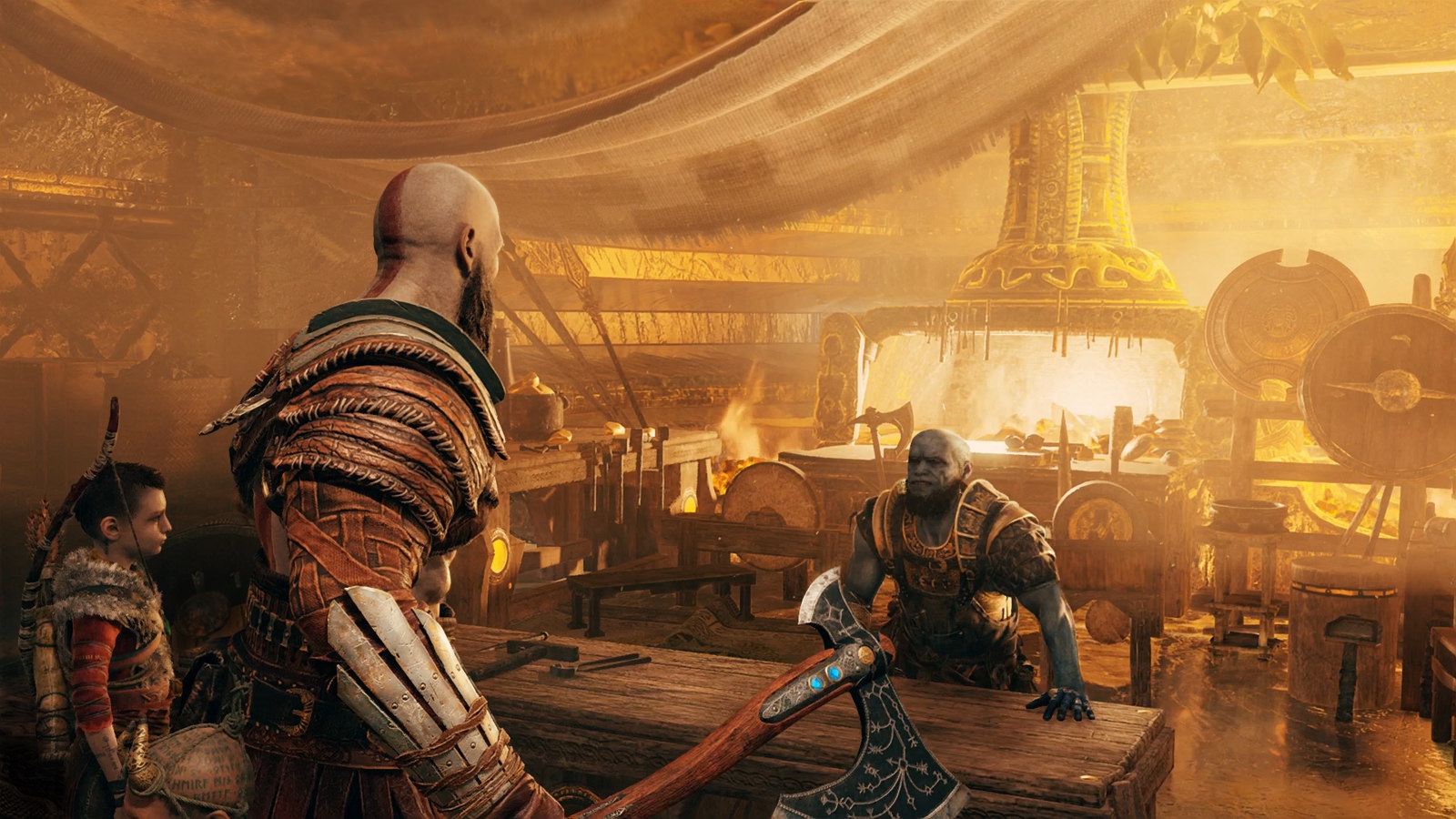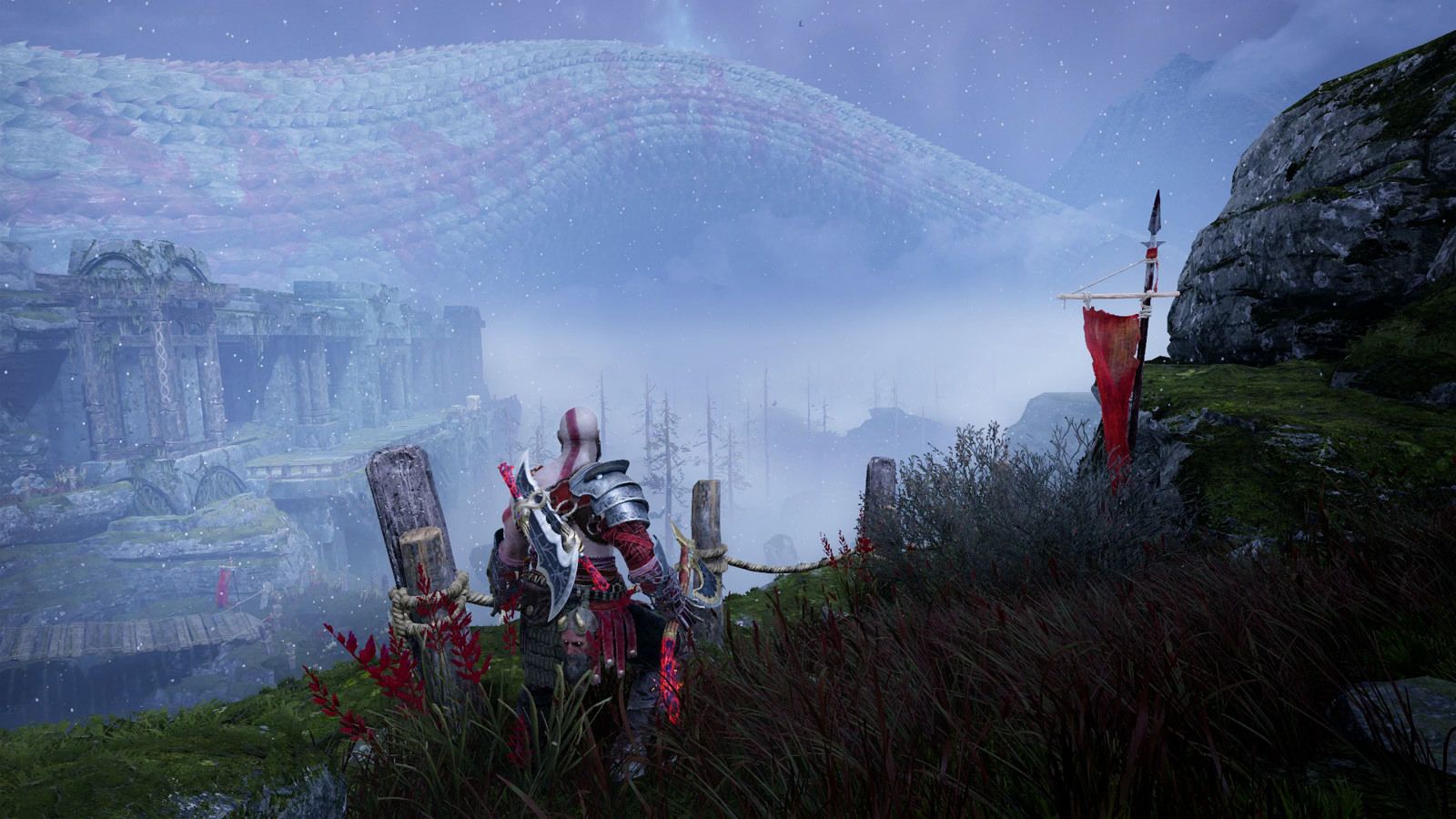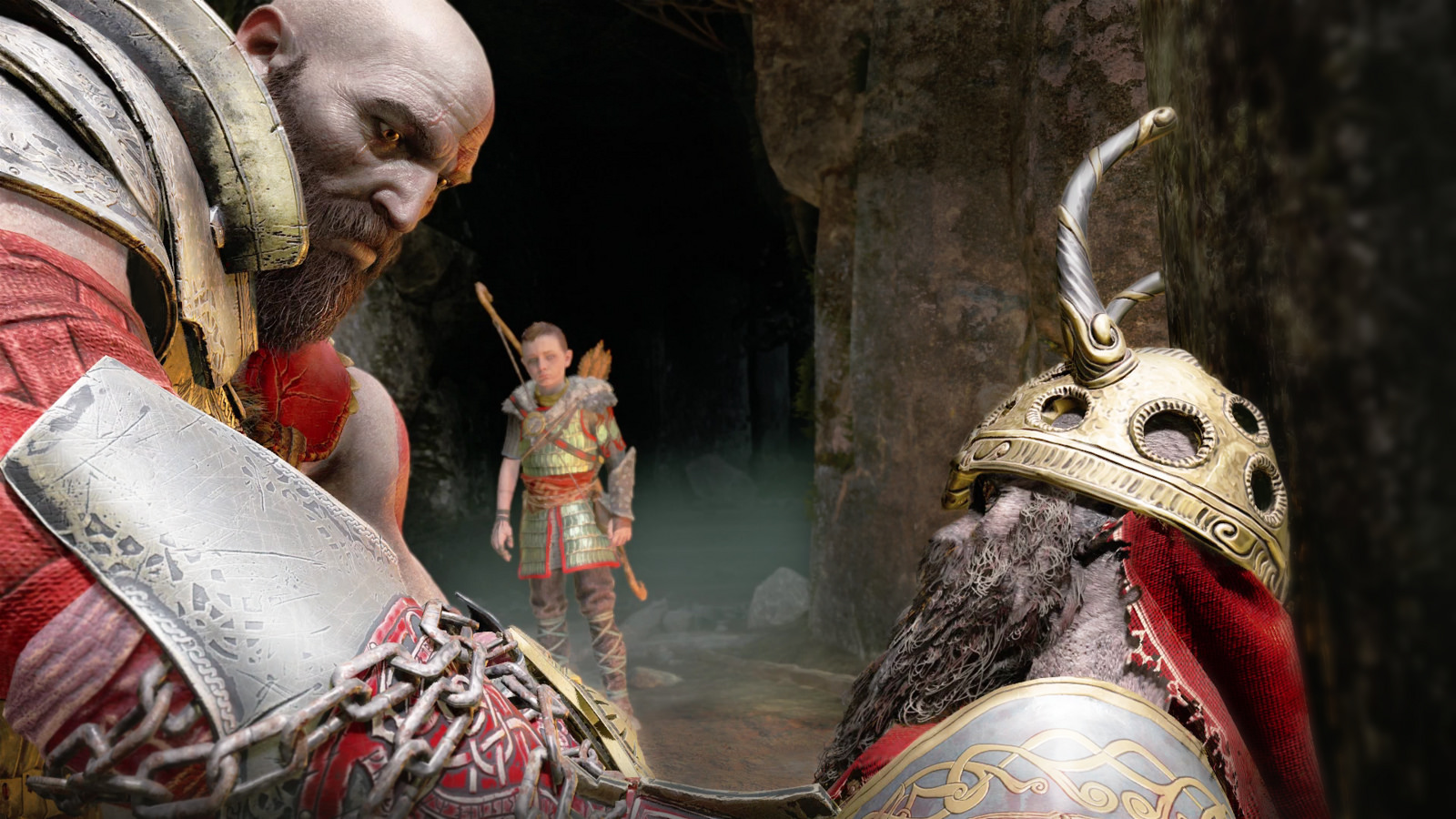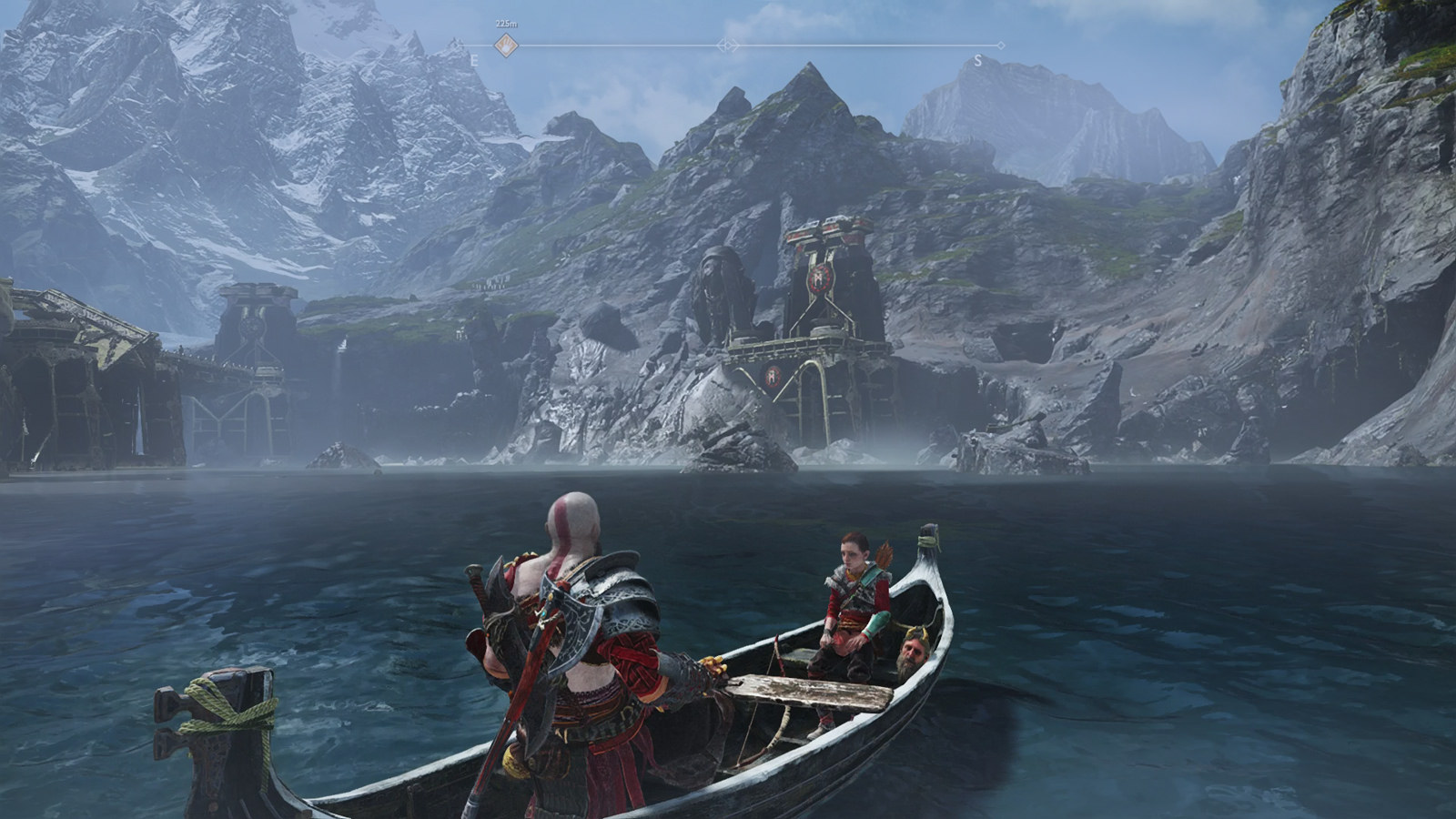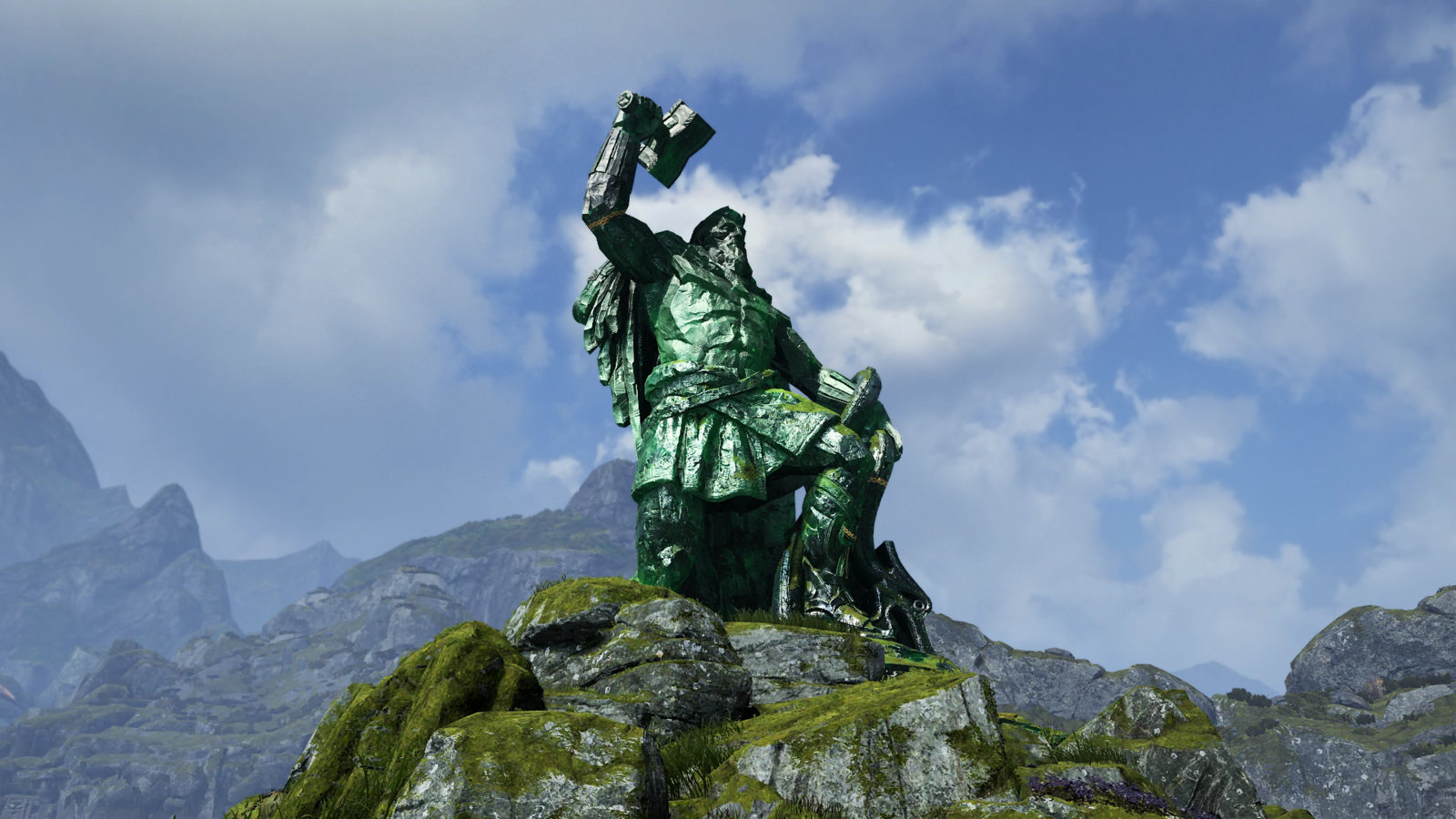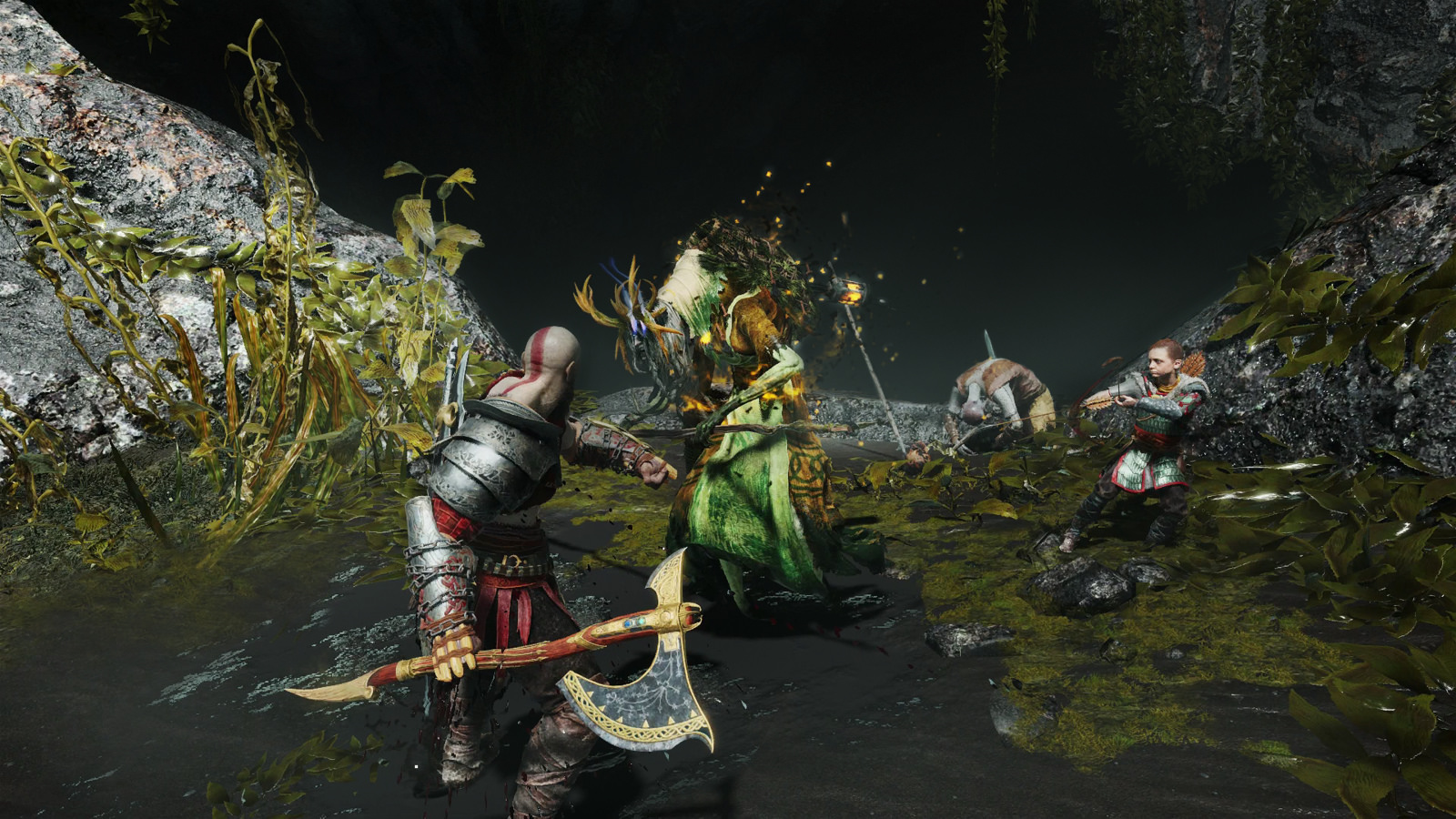God of War was built around three core pillars that would influence all design decisions for the project: Combat, Father/Son, and Exploration. When I started at Santa Monica Studio in May 2015, the Exploration pillar was the least defined. The franchise had traditionally been a solely linear experience, but the team was hoping to add ten additional hours of optional content outside of the critical path.
To accomplish that goal, a team focused on the “Exploration” portion of the game was formed. I was tasked with helping them define what the content would be, and ultimately, to design the quests that would help entice the player into participating in these optional activities.
WARNING: Spoilers ahead!
Establishing Constraints
One of the first challenges we faced when thinking about quests was that we had a game world devoid of friendly NPCs. There were no towns or bustling hubs, and the characters we did have (Brok, Sindri, Freya) were all heavily tied to the core narrative, which was still in flux. I set out to create a quest giver that was light-weight, but also flexible enough to be used in multiple locations, while providing a varied suite of quest activities. My initial prototype was a burial circle with an interact that popped in a ghost guy from Helheim. The “wayward spirits” gave a human voice to the mythical world around you. Being able to tell stories from people who lived in this world made it feel more alive, which is ironic since they were all dead.
As the project moved forward, we started defining buckets in which these quests would fit. Each bucket was defined by the amount of work required to bring the quest to a finished state:
“A” Quests
- Full levels of dedicated content
- Cinematic support, heavy narrative
- Quests acquired through an established cast member (Brok and Sindri)
“B” Quests
- Encourage exploration to the islands and beaches in the Lake of Nine
- No cinematic support, moderate narrative support
- Quests acquired through the wayward spirit module
“C” Quests
- Provide additional discoverability and reward exploration
- Light, non-critical narrative support
- Utilize gameplay modules such as Treasure Maps and Artifacts
“D” Quests
- Checklists, milestones, stat counters
- No narrative support
- Labors, Ravens, Challenges
“Got time for a favor?”
While focusing on our “A” and “B” quests, one of the first steps was defining how the player would interact with the NPCs to start their quest. We settled on a flow that looked something like this:
This flow obviously went through a ton of iteration, mostly in response to problems we identified in playtesting:
- Initially, there was no in-world icon callout until after the greeting had finished playing. Players were routinely running past quest givers, not realizing that a quest was available. The interact icon was changed to be available immediately, allowing players to interrupt the greeting and start the quest briefing.
- The briefing is typically the meat of the interaction, explaining to the player exactly what they need to do. Because so much of this is informational, there is little room for narrative without locking the player down for too long. An optional briefing follow-up was added to fit in additional narrative and lore. We ended up doing the same thing for the completion too.
- Speaking of locking the player down, this was a point of contention. When giving the player a briefing or completion dialogue, what are they doing? Are they completely locked down, unable to move? Can they run off at any time and interrupt the briefing? We eventually settled on a system where we would lock you down within a range, with a custom camera, and a forced slow walk. That way, the player still maintained a measure of control, while ensuring they heard the relevant information.
- There were still people who wanted to do the quest for the reward, but didn’t care about the narrative. We added the ability to skip lines late in the project.
Filling in the Blanks
By the time we actually starting writing and implementing our quests, most of our exploration spaces were already laid out by Level Design:
- Large Levels: Konunsgaard, Viethurgaard
- Dungeons: Volundr Mines, Landsuther Mines, Fafnir’s Storeroom, Northri Stronghold
- Islands & Beaches: Lookout Tower, Iron Cove, Isle of Death, Forgotten Caverns, Stone Falls, Cliffs of the Raven, The Mason’s Channel, Ruins of the Ancient, Buri’s Storeroom
Starting with our “A” quest givers, Brok and Sindri, we began assigning these spaces to their respective quest lines. I knew I wanted both Brok and Sindri to each have a short quest-line that culminated with a shared quest after their reunion. With four dungeons, we gave the two mines to Brok and the other two dungeons to Sindri, reserving Konunsgaard for their penultimate quest.
Our “B” quest givers, the wayward spirits, were used to encourage exploration around the islands and beaches, which had two distinct states as the water dropped. We wanted players to explore all the Lake of Nine had to offer at both water drops and designed the quests to help naturally drive you around the islands. Every one of these quests and their components served a very specific purpose. Some areas, such as Viethurgaard were meant to be purely discoverable, so a quest may have been positioned nearby, but it was still up to the player to explore and discover on their own… which in itself is a very rewarding experience.
If the quest didn’t serve a definitive purpose, it didn’t make it into the final game. This was the case with the very first quest we built, “Oh Brother, My Brother.” In the quest, a spirit asked you to find his brother who was dead, but didn’t know it. After telling the brother he was dead, he got upset and cursed his brother’s name. You return to the initial quest giver, only to find out… wait for it… he didn’t know he was dead either. It was an interesting narrative twist, but at its core, it was a glorified fetch quest with no gameplay. We all felt strongly about not having content for the sake of having content. Sometimes cutting content actually makes the game stronger and, more importantly, we learned some valuable lessons from this initial attempt.
“I am no errand boy.”
A lot of the narrative for our quests began with questions about the characters’ motivations. For Brok and Sindri, it was logical that legendary blacksmiths would want to craft legendary weapons and armor. To fit the quest structure, we decided that they would both be searching for the tools to craft the Dwarven Armor of Legend and that they wouldn’t find what they were looking for until the second quest in the chain. We intentionally structured the first quests in their respective chains to end with an item acquire, but not the item you were looking for. This helped us to build in a time gap between quests 1 and 2 as the dwarves examined the items you found.
After finishing the second quest for both Brok and Sindri and retrieving their legendary crafting tools, you could embark on their shared penultimate quest, Hail to the King. That quest ended with the acquisition of ingredients that could be used to craft the armor set from either Brok or Sindri. The armor served as the player motivation for undertaking these quests, but we failed in effectively communicating from the start that the four quests would pay off with a high level armor set. If we had done a better job communicating this, I think we would have seen less people waiting until the end of the game to do these quests.
The harder question for us to answer was Kratos’ motivation. As a character, Kratos is not the type to go out of his way to help a stranger. When doing a favor for Brok and Sindri, we always tried to hammer home the idea that Kratos was doing this to craft better gear to help with his journey. This was less clear with the wayward spirits, but Atreus’ naiveté and kind-hearted nature leant itself well to wanting to help the spirits. The wayward spirit quests were all written with the theme of Kratos teaching his son a lesson, which helped clarify Kratos’ motivation support the Father/Son pillar. This idea of using quests as a teaching opportunity became core to all of our “B” quests. We knew this content would not receive the same support as the main game, but with the narrative being such a core part of the game and this theme tying all the quests together, we were able to build light-weight, optional content that felt worthwhile.
Tying Everything Together
Now that the game is in the wild, I see a number of factors as being key to our success:
- “Let’s explore!” These lines that were added for Atreus meant so much to us. It was just a small handful of lines, but it clearly let the player know they were at a point where they could continue down the critical path or head off and explore. The addition of these lines had measurable impact on Exploration engagement.
- Density & Placement: We always tried to put a little bit of everything into each Exploration space. In the ideal scenario, you would be doing an “A” quest, find a Treasure Map that leads you past a “B” quest, stumble upon a chained dragon, all while collecting Artifacts, finding lore, and killing ravens along the way.
- Player Freedom: It was important to us that players could experience the exploration at their own pace. We knew we never wanted a quest to expire after becoming available, but that presented some challenges. When Atreus learns he is a god, his attitude changes and side quests are locked out for a brief time to avoid an awkward shift in tone. We also had to account for players who went off exploring without the quest. Entry stones and Jormungandr’s body were used as gating mechanisms to ensure the player didn’t boat down a path for 10 minutes only to find a dead end.
- Loot: We saw a direct correlation between the reward players received for completing a quest and the scores they gave the quests in playtests. When we play tested with placeholder rewards, scores were quite low. After giving players better loot, scores went way up. Credit to Cory and leadership for not panicking and overhauling the quest when all we needed was a better reward.
Working on these quests was an extremely rewarding experience for me. The team here at Santa Monica has a dedication to their craft that I’ve rarely seen anywhere else. We put everything we had into creating some enjoyable and memorable experiences for all of you. I can only hope you all enjoyed playing it half as much as I enjoyed working on it.
God of War is now $39.99. Hit the PlayStation Store to experience a new beginning.
Website: LINK


